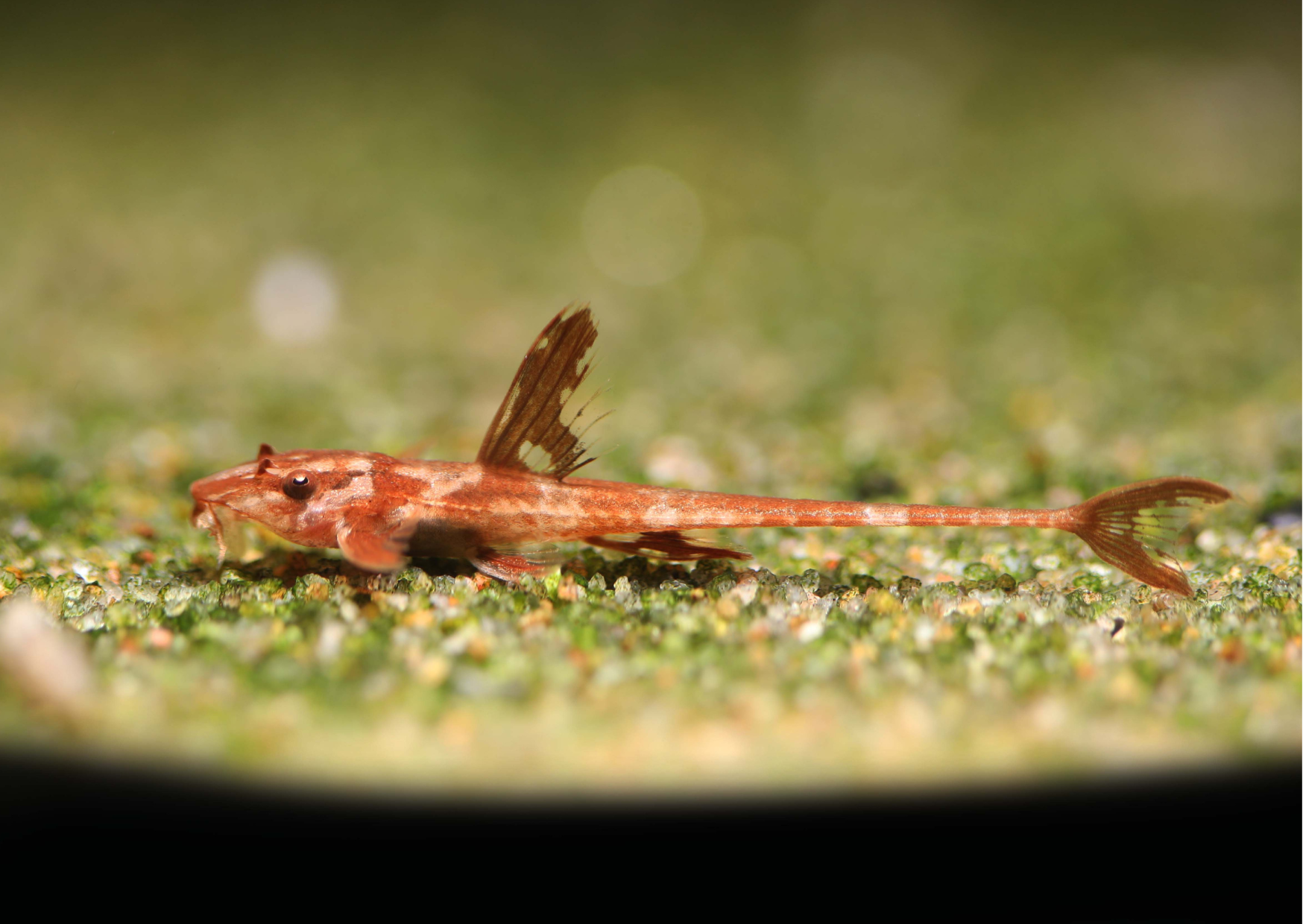Next working day delivery with Royal Mail Tracked 24
Fish Profiles | Whiptail Catfish

Fish Profiles | Whiptail Catfish
Whiptail catfish are fascinating freshwater fish known for their elongated, whip-like tails and peaceful nature. They are popular in the aquarium hobby due to their unique appearance and manageable size, typically growing to around 4–6 inches (10–15 cm). Some species, like the Royal Whiptail Catfish, can reach up to 8 inches.
These catfish originate from South American streams and thrive in well-maintained aquariums with plenty of hiding spots, such as driftwood, plants, and caves. They prefer dim lighting and gentle water movement. Their diet consists of algae wafers, catfish pellets, frozen foods, and vegetable matter like cucumber or kale.
Whiptail catfish are generally peaceful, making them great additions to community tanks. They coexist well with tetras, Corydoras catfish, dwarf cichlids, and other calm fish. Males can be slightly territorial around their nests but do not attack other fish.

Whiptail catfish thrive in a well-maintained aquarium that mimics their natural habitat. Here’s what you need for an ideal setup:
Tank Size: A minimum of 20 gallons / 90 litres is recommended for a single whiptail catfish.
Water Parameters: They prefer soft, slightly acidic water with a pH between 6.0–7.0 and a temperature range of 24–26°C (75–79°F).
Filtration: A high-quality filtration system is essential to keep the water clean and free from harmful substances.
Substrate & Decor: Use fine sand or smooth gravel as a substrate. Provide driftwood, caves, and plants for hiding spots, as they enjoy a natural, shaded environment.
Tank Mates: They are peaceful and do well with tetras, Corydoras catfish, dwarf cichlids, and other calm fish.
Diet: Feed them algae wafers, catfish pellets, frozen foods, and vegetable matter like cucumber or kale.
Whiptail catfish appreciate a well-planted tank with soft, broad-leaved plants and shaded areas. Here are some excellent plant choices:
Amazon Sword – Provides large leaves for shelter and grazing.
Java Fern – Hardy and thrives in low-light conditions.
Anubias – Slow-growing and perfect for attaching to driftwood.
Cryptocoryne – Offers dense foliage for hiding spots.
Hornwort – Helps maintain water quality and provides cover.
These plants create a natural environment that mimics their South American habitat.
To browse our range of catfish food online please click here.
To browse more blogs about catfish in aquariums please click here.
Photo credit(s): Shutterstock / Canva Pro Licence










